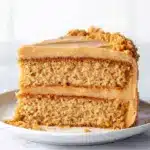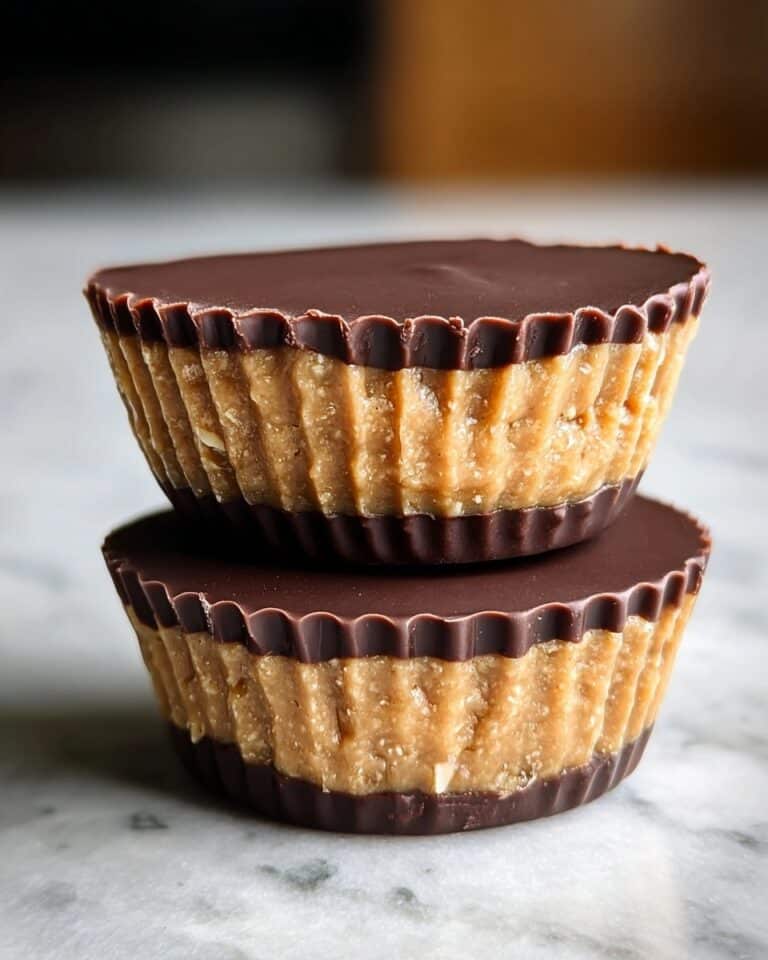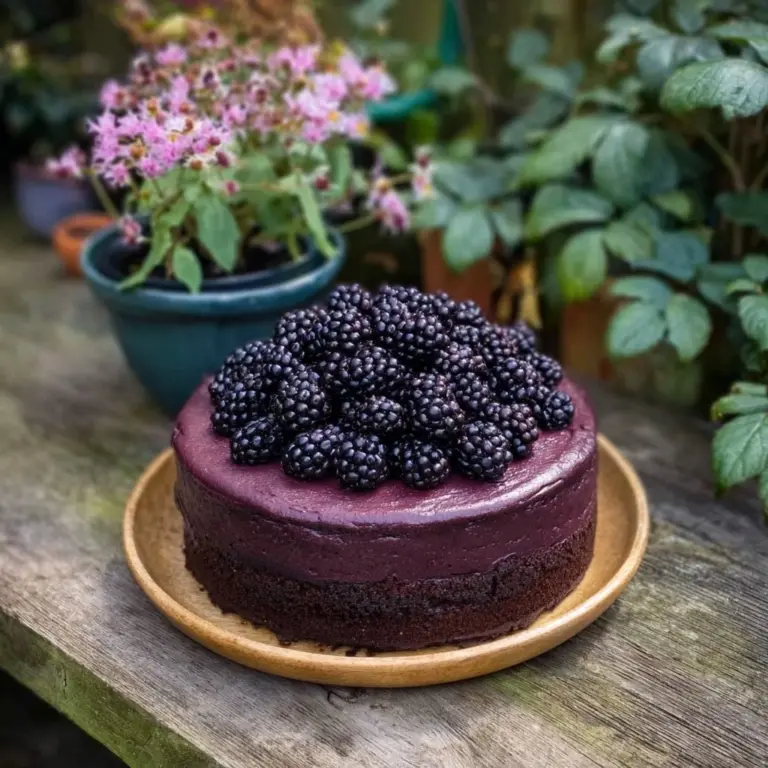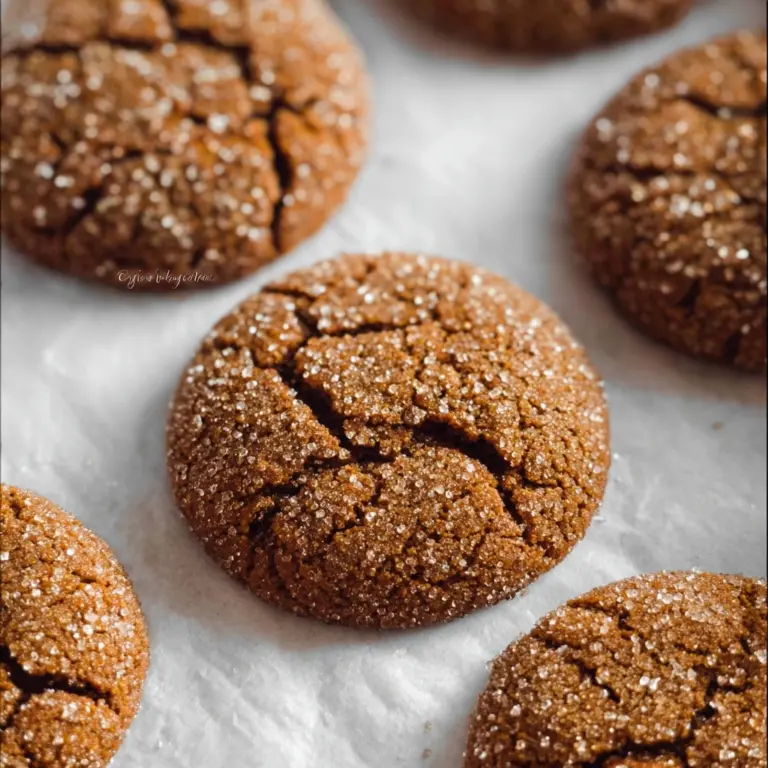Biscoff Cake Recipe
If you’re a fan of rich, caramelized flavors wrapped in soft, moist cake layers, then the **Biscoff Cake** is about to become your new obsession. This cake combines the iconic, spiced cookie butter that has taken the dessert world by storm with a tender crumb and indulgent buttercream, creating a dessert that’s simultaneously nostalgic and unique. Whether you’re baking for a special occasion or just because you need a little sweetness in your day, this cake delivers layers of cozy, cinnamon-spiced comfort with every bite.

Ingredients You’ll Need
Every ingredient in this Biscoff Cake recipe is simple yet essential, working together to build layers of flavor and texture that truly sing. From the creamy Biscoff spread to the soft buttermilk, each element plays its part in creating a cake that’s both flavorful and moist.
- All-purpose flour (2 1/2 cups / 312 grams): The backbone of the cake’s structure, ensuring a tender crumb.
- Baking powder (1 1/2 teaspoons): Helps the cake rise beautifully for a light texture.
- Baking soda (1/2 teaspoon): Works with the buttermilk to give the cake a perfect rise and dark golden color.
- Salt (1/2 teaspoon): Balances sweetness and enhances flavor.
- Unsalted butter (1/2 cup / 112 grams), softened: Adds richness and moisture for that melt-in-your-mouth feel.
- Brown sugar (1/2 cup / 105 grams): Brings depth and subtle molasses undertones.
- Granulated sugar (3/4 cup / 150 grams): Sweetens and helps with the light crumb.
- Biscoff spread (2/3 cup): The star ingredient infusing the cake with its iconic spiced sweetness.
- Vegetable oil (1/2 cup / 120 ml): Keeps the cake incredibly moist without weighing it down.
- Vanilla extract (2 teaspoons): Adds warmth and rounds out the flavors.
- Large eggs (3), room temperature: Provide structure and richness.
- Buttermilk (1 1/4 cups / 300 ml), room temperature: Tenderizes the crumb and adds a subtle tang.
Biscoff Buttercream Ingredients
- Unsalted butter (1 cup / 226 grams), softened: The creamy base for the frosting.
- Cream cheese (2 ounces / 56 grams), full-fat: Adds tang and helps balance the sweetness.
- Biscoff cookie butter (3/4 cup): Infuses the frosting with its beloved spiced cookie flavor.
- Cinnamon (1/2 teaspoon): Adds a warm, cozy note.
- Salt (1/4 teaspoon): Enhances and balances all the sweetness.
- Vanilla extract (1 teaspoon): Elevates the flavors beautifully.
- Powdered sugar (2 1/2–3 cups / 275–330 grams): Sweetens and thickens the frosting to perfection.
- Whipping cream or milk (1–2 tablespoons): Adjusts the frosting consistency for spreading or piping.
Filling
- Biscoff spread (1/3 cup): Warmed for easy spreading, adds an extra layer of rich flavor.
- Crushed Lotus cookies (4–6 cookies): Give delightful crunch for texture contrast.
How to Make Biscoff Cake
Step 1: Prepare Your Pans and Preheat the Oven
Start by preheating your oven to 350°F (180°C). Line the bottoms of two 8-inch round cake pans with parchment paper and lightly grease the sides. This step ensures your delicate Biscoff Cake layers come out easily without any sticking or tearing, which is crucial given the cake’s tender crumb.
Step 2: Mix the Dry Ingredients
In a medium bowl, whisk together the all-purpose flour, baking powder, baking soda, and salt until evenly combined. This careful blending prevents clumps and ensures your cake will rise evenly with a consistent texture throughout.
Step 3: Cream Butter, Sugars, and Biscoff Spread
In a large bowl, beat the softened butter together with brown sugar, granulated sugar, and Biscoff spread until the mixture is smooth and lump-free. This step is where the magic begins, as the Biscoff spread infuses the batter with its signature spiced caramel flavor.
Step 4: Add Oil, Vanilla, and Eggs
Next, beat the vegetable oil and vanilla extract into the butter mixture, which keeps the cake moist without making it heavy. Then, add the eggs one at a time, ensuring each is fully incorporated before adding the next for perfect emulsification.
Step 5: Alternate Folding Dry Ingredients and Buttermilk
Using a whisk, gradually add a third of the dry ingredients to the wet mixture, followed by half of the buttermilk. Repeat this process, finishing with the dry ingredients. This method creates a tender cake without over-mixing, which keeps it light and delicate.
Step 6: Bake the Cake Layers
Divide the batter evenly between the two prepared pans. Bake for 35-40 minutes, until the edges pull away slightly and a toothpick inserted in the center comes out clean. Let the cakes cool in the pans for 15 minutes before carefully removing them—this cake is as delicate as it is delicious.
Step 7: Prepare the Biscoff Buttercream
While the cakes cool, make the luscious Biscoff buttercream. Beat the softened butter until creamy, then mix in the cream cheese and Biscoff cookie butter until smooth. Add powdered sugar in stages, along with vanilla, cinnamon, and a pinch of salt, beating well between additions. Adjust the consistency with cream or milk until your frosting is dreamy and spreadable.
Step 8: Assemble the Biscoff Cake
Warm the Biscoff spread slightly so it’s easy to spread. If the cake tops have domed, gently level them with a serrated knife. Place one layer on your serving plate, spread a thin layer of frosting on top, pipe a border of frosting if you like, then spread the warmed Biscoff and sprinkle with crushed Lotus cookies for tantalizing crunch. Top with the second layer, chill briefly, then frost the outside beautifully with swirls of buttercream.
How to Serve Biscoff Cake

Garnishes
Enhance your Biscoff Cake’s homemade charm by topping it with a few extra crushed Lotus cookies or delicate swirls of Biscoff buttercream. A light dusting of cinnamon or a drizzle of warm Biscoff spread adds a finishing touch that’s sure to impress your guests.
Side Dishes
This cake pairs wonderfully with a scoop of vanilla ice cream or a dollop of lightly whipped cream, which balances the richness while adding a cool, creamy element. For a cozy twist, serve it with a warm cup of chai tea or coffee to echo the spiced notes in the cake.
Creative Ways to Present
For an unforgettable presentation, try stacking mini Biscoff Cakes for individual servings or serving slice portions with a drizzle of caramel sauce and a sprinkle of toasted nuts. You can also turn it into a layered trifle by cutting the cake into cubes and layering it with frosting and cookie crumbs in a glass bowl.
Make Ahead and Storage
Storing Leftovers
Once assembled, your Biscoff Cake can be stored covered in the refrigerator for up to four days. Make sure to keep it airtight so the cake stays moist and the frosting stays fresh. Leftover unfrosted cake layers can be wrapped tightly and kept at room temperature overnight if you prefer to frost just before serving.
Freezing
You can freeze both the cake layers and the assembled cake. Wrap each cooled layer tightly in plastic wrap and place in a freezer-safe bag for up to two months. Frosted cakes freeze best if double wrapped and thawed overnight in the fridge before serving.
Reheating
If you prefer your Biscoff Cake slightly warmed, remove a slice from the fridge and microwave it for 10-15 seconds. This softens the frosting and brings out the cake’s rich flavors, making for an irresistibly cozy treat.
FAQs
Can I use regular milk instead of buttermilk?
Absolutely! If you don’t have buttermilk on hand, simply add 1 tablespoon of lemon juice or white vinegar to 1 1/4 cups of milk. Let it sit for 5 minutes to curdle, then use it as a perfect substitute that still gives that tender crumb and slight tang.
Is it necessary to use cream cheese in the buttercream?
While cream cheese adds a lovely tang and richness, you can substitute it with an extra 1/4 cup of butter if you prefer a pure buttercream. Just keep in mind that the cream cheese helps balance the intense sweetness of the Biscoff cookie butter.
Can I make this cake in a single pan and slice it?
You can, but baking times will vary depending on your pan size. A 9×13 inch pan works well, but you’ll want to adjust the baking time to about 40-45 minutes and possibly reduce the frosting quantity by half. Just keep a close eye on it to prevent over-baking.
How do I avoid lumps in the batter and frosting?
Make sure your butter and eggs are at room temperature before starting. Beat the butter and sugars thoroughly to eliminate lumps. When mixing dry and wet ingredients, alternate and whisk gently but thoroughly to incorporate evenly without over-mixing. For the frosting, add powdered sugar gradually and beat at low then medium speed for smoothness.
What’s the best way to crush Lotus cookies for the filling?
Place the cookies in a zip-top bag and gently crush them with a rolling pin or pulse briefly in a food processor. You want small crumbs with a few larger pieces to add a delightful texture, but avoid turning them into powder.
Final Thoughts
There’s something truly special about the Biscoff Cake: it’s a celebration of the unique flavor that has captured so many hearts around the world. Once you’ve experienced the creamy, spiced layers and luscious frosting, you’ll find it impossible not to want to make this cake again and again. So why not grab your ingredients and treat yourself and your loved ones to a slice of this scrumptious delight today?
PrintBiscoff Cake Recipe
This indulgent Biscoff Cake combines the rich, spiced flavors of Biscoff cookie butter throughout a moist, tender cake layered with creamy Biscoff buttercream and a crunchy Lotus cookie filling. Perfect for special occasions or any day you crave a luscious, crowd-pleasing dessert bursting with caramelized cinnamon biscuit goodness.
- Prep Time: 20 minutes
- Cook Time: 40 minutes
- Total Time: 1 hour
- Yield: 12 servings 1x
- Category: Cake
- Method: Baking
- Cuisine: Western
- Diet: Vegetarian
Ingredients
Biscoff Cake
- 2 1/2 cups all-purpose flour (312 grams)
- 1 1/2 teaspoons baking powder
- 1/2 teaspoon baking soda
- 1/2 teaspoon salt
- 1/2 cup unsalted butter (112 grams), softened
- 1/2 cup brown sugar (105 grams), light
- 3/4 cup granulated sugar (150 grams), caster works
- 2/3 cup Biscoff spread
- 1/2 cup vegetable oil (120 ml), or canola oil
- 2 teaspoons vanilla extract
- 3 large eggs, room temperature
- 1 1/4 cup buttermilk (300 ml), room temperature
Biscoff Buttercream
- 1 cup unsalted butter (226 grams), softened
- 2 ounces cream cheese (56 grams), full-fat, or substitute with an extra 1/4 cup butter
- 3/4 cup Biscoff cookie butter
- 1/2 teaspoon cinnamon
- 1/4 teaspoon salt, omit if using salted butter
- 1 teaspoon vanilla extract
- 2 1/2 – 3 cups powdered sugar (275–330 grams)
- 1–2 tablespoons whipping cream, or milk
Filling
- 1/3 cup Biscoff spread
- 4–6 crushed Lotus cookies
Instructions
- Prepare the pans and oven: Preheat the oven to 350F (180C). Line the bottoms of two 8-inch (20 cm) round cake pans with parchment paper and lightly grease the sides to prevent sticking.
- Combine dry ingredients: In a medium bowl, whisk together the all-purpose flour, baking powder, baking soda, and salt to evenly distribute the leavening agents.
- Cream butter and sugars: In a large bowl, beat the softened butter, brown sugar, granulated sugar, and Biscoff spread together until smooth with no lumps of butter or sugar remaining.
- Add oil and vanilla: Beat in the vegetable oil and vanilla extract until well combined into the creamed mixture.
- Incorporate eggs: Add the eggs one at a time, beating well after each addition to create an even batter.
- Alternate dry ingredients and buttermilk: Using a whisk, add about one-third of the dry ingredients to the batter, then half of the buttermilk. Repeat with another third of the dry ingredients and the remaining buttermilk, then finish with the last third of the dry ingredients. Mix until there are no visible lumps, but avoid overmixing.
- Fill pans and bake: Divide the batter evenly between the prepared cake pans. Bake in the center of the oven for 35-40 minutes, or until the edges start to pull away from the sides and a toothpick inserted into the center comes out clean.
- Cool the cakes: Let the cakes cool in the pans for at least 15 minutes, then carefully release them onto cake boards or plates as the layers are delicate.
- Make the Biscoff buttercream: Beat the softened butter in a large bowl until creamy. Add the cream cheese and Biscoff spread and beat until smooth. Gradually add 2 cups of powdered sugar along with vanilla, cinnamon, and salt, starting on low speed, then increasing to medium until combined. Add the remaining powdered sugar gradually, alternating with tablespoons of whipping cream or milk until the frosting reaches the desired consistency and sweetness.
- Prepare filling: Microwave 1/3 cup Biscoff spread for 30-45 seconds on medium power until warm but not hot, then stir. Set aside for spreading.
- Level cake layers: Ensure the cake layers are completely cooled. If the tops are domed, level them gently by sawing off the rounded top with a serrated knife.
- Assemble the cake – first layer: Place one cake layer on the serving plate. Spread a thin layer of frosting on top. Fill a piping bag with about 1/3 to 1/2 of the frosting and pipe a border around the edge or spread a thick band of frosting around the edge to contain the filling.
- Add filling: Spread the warmed Biscoff evenly over the center of the cake layer inside the frosting border. Sprinkle with crushed Lotus cookies for added crunch.
- Add second layer and chill: Place the second cake layer on top of the filling. Apply a thin crumb coat of frosting to the sides and place the cake in the refrigerator for about 20 minutes to set the frosting.
- Finish frosting: Remove from the refrigerator and frost the entire cake with the remaining buttercream, using swirls or decorative patterns. Optionally, decorate the top with more crushed Lotus cookie crumbs.
Notes
- Pan Sizes: Using two 9-inch (23 cm) round pans yields a slightly thinner cake that bakes in about 30-35 minutes. For a 9×13 inch rectangular pan, bake 40-45 minutes and halve the frosting recipe accordingly.
- Pan Depth: Avoid 8-inch pans with 1 inch sides as the batter amount is too large; use pans with at least 2 inch sides for proper rise and bake.
- Biscoff Substitute: Any cookie butter brand works. You’ll need approximately two 400 gram (14 ounce) jars to complete the cake, frosting, and filling with some leftover.
- Buttermilk Substitute: If you don’t have buttermilk, add 1 tablespoon lemon juice to 1 1/4 cups milk. Stir and let sit for 5 minutes before using to mimic buttermilk acidity.
- Storage: Store leftover frosted cake covered in the refrigerator for up to 4 days. Unfrosted cake layers can be wrapped tightly and kept at room temperature overnight but handle carefully due to their fragility.
- Nutrition: Nutritional estimates are based on one slice out of twelve, including frosting and filling, assuming all frosting is used.
Nutrition
- Serving Size: 1 slice (1/12th of cake)
- Calories: 823 kcal
- Sugar: 59 g
- Sodium: 257 mg
- Fat: 50 g
- Saturated Fat: 22 g
- Unsaturated Fat: 16 g
- Trans Fat: 1 g
- Carbohydrates: 87 g
- Fiber: 1 g
- Protein: 8 g
- Cholesterol: 116 mg
Keywords: Biscoff Cake, Biscoff Cookie Butter Cake, Lotus Cake, Buttercream Frosting, Dessert Cake, Caramelized Cookie Butter Cake








